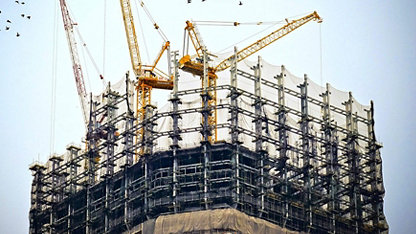This research examines the use of the lower accuracy UAV data where high accuracy data from the terrestrial laser scanner is available but has incomplete coverage.
The research project was developed to address an issue with a retaining wall constructed to project a major road in New Brunswick, Canada.
The main purpose of the project was to:
- investigate variations in the shape of the retaining wall using the laser scanner
- investigate the precision and accuracy of the laser scanner
- determine if data from a UAV could be merged with the laser scanning data to fill in gaps in the laser scanning data caused by vegetation growth in front of the retaining wall.
The study area was chosen because the provincial government of New Brunswick did not have, and therefore needed to develop, a strategy to check the stability of retaining walls constructed nearly 20 years ago. In the event of a partial collapse of the wall, the provincial government could be charged with negligence for not checking on the stability of any retaining walls constructed adjacent to major roads.
The research team took the opportunity to carry out an assessment of the laser scanner's accuracy by making use of points coordinated using the Global Positioning System (GPS).
This research is relevant to Geomatics Engineers and Civil Engineers as – broadly speaking – it is the Geomatics Engineer's responsibility to monitor the retaining wall, and the Civil Engineer's to develop solutions if movement is detected by the Geomatics Engineer.
RICS Research Trust is now the Property Research Trust
This research was funded by the RICS Research Trust. As of the end of January 2021, RICS Research Trust became fully independent of RICS, and has been rebranded as the Property Research Trust. Find out more here . The Trust supports and promotes high-quality independent contributions to knowledge in the disciplines of land, real estate and construction.
Published date: 14 June 2019










